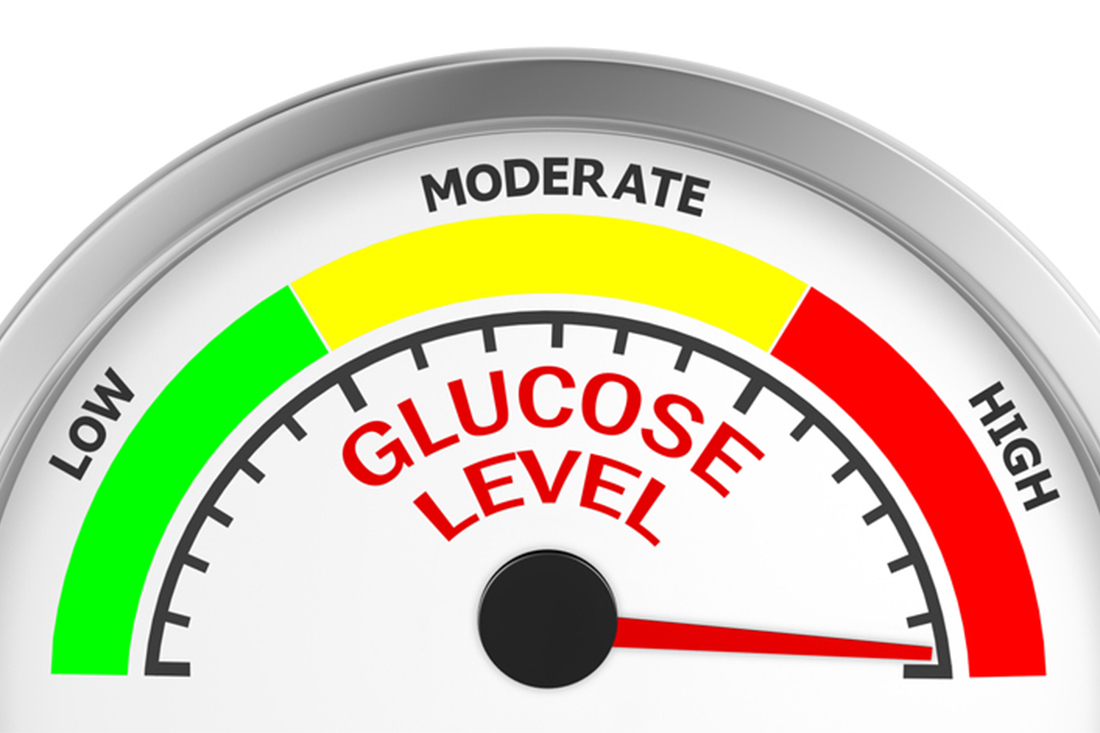Glucose is the main type of sugar in the blood and the major source of energy for the body’s cells. Glucose comes from the carbohydrates we eat, such as bread, potatoes and fruit. Though the body can also make glucose from fats and proteins, this process is neither rapid or efficient. Glucose is the body’s preferred fuel source and it produces ATP, which is the basic energy we need to live and function at the cellular level.
When the body doesn’t need ingested glucose for energy, it stores it in the liver and muscles in the form of glycogen. When the body needs glucose again, it converts the glycogen back into glucose. This conversion process is designed to be a very efficient system.
If the amount of glucose released into your bloodstream after eating is more than your cells need and more than your liver can store as glycogen, excess glucose is stored as saturated fatty acids. This is why you may gain weight if you consume too much sugar. It should be noted that fiber and healthy fats help to slow the breakdown and release of sugar into the blood.
The majority of glycogen is stored in skeletal muscles (∼500 g) and the liver (∼100 g). Fatigue develops during exercise when the glycogen stores are depleted in the active muscles.
This brings us to insulin, which has a symbiotic relationship with glucose. Insulin, a hormone produced in the pancreas, moves glucose into muscle and liver cells. While both glucose and insulin are critical to normal, healthy body functions, they must remain within strict limits. Too much or too little of either can be very dangerous, even deadly.
Eating a large amount of high glycemic index foods, such as refined sugars and simple carbohydrates—common in the typical American diet—causes your pancreas to pump out lots of insulin to remove excess glucose from your blood. However, that exposes your cells to too much insulin, which is also damaging to your health.
Excess insulin in your bloodstream can affect the arteries all over your body. It causes the arterial walls to get inflamed, grow thicker than normal and more stiff, which stresses and damages your heart over time.
This is why it’s so important to avoid the constant cycle of glucose and insulin upswings. Ultimately, the pancreas can become exhausted and produces less insulin when glucose is high. The body may even become resistant to insulin. This is what happens to people with type-2 diabetes and pre-diabetes. Insulin resistance is common in people who are overweight since they tend to eat more calories and their pancreas becomes overwhelmed.
Stress can also cause a spike in insulin, increasing the prospects of insulin resistance. Chronic stress, whether physical or psychological, can affect your whole body. As part of the stress response, the adrenal glands pump out cortisol, the body’s main anti-stress hormone. Cortisol is released not only when you are physically stressed but also when you are psychologically stressed.
As your body perceives stress, your adrenal glands make and release cortisol into your bloodstream. Often called the “stress hormone,” cortisol causes an increase in your heart rate and blood pressure. Excess cortisol causes high blood pressure, aka hypertension. Higher cortisol levels are linked to an increased risk of cardiovascular events, including heart attack and stroke, according to the American Heart Association.
Cortisol and insulin are intimately linked, as are stress and insulin resistance. One of the main functions of cortisol is to regulate blood sugar levels. Eating too much glucose-rich food causes a spike in blood sugar, which causes a subsequent spike in insulin, which causes a subsequent crash in blood sugar levels. This roller coaster-like effect is a huge stressor on your system and triggers the release of cortisol, which raises blood sugar levels by breaking down glycogen stores and stimulating cravings for sugary foods. Thus the cycle begins again.
Ultimately, the ups and downs of blood sugar result in the ups and downs of insulin and cortisol. This tumultuous process exhausts both the pancreas and the adrenal glands.
Reducing or managing psychological stress will not only help your adrenal glands recover, but can also help with reducing insulin resistance.
One way to help assure healthy adrenal function is to adhere to a diet that is low in sugar, caffeine and junk food, as well as following a healthy sleep schedule.
Aside from limiting simple sugars and refined carbohydrates, the best way to manage your glucose levels is through exercise.
Your body’s ability to uptake glucose and store it as glycogen (glycogen synthesis) is increased after exercise. The reduced glycogen stores in skeletal muscles after exercise allow carbohydrates to be stored as muscle glycogen.
Ultimately, the reduction of glycogen in skeletal muscle after exercise allows a healthy storage of carbohydrates after meals and helps prevent the development of type-2 diabetes.
Exercise improves insulin sensitivity in both healthy people and insulin-resistant people. Moreover, the risk for development of type-2 diabetes is reduced by regular exercise.
Exercise offers three means to remove glucose from the blood:
1. Exercise uses lots of glucose for fuel.
2. Skeletal muscle is large and, therefore, serves as a significant reservoir for glycogen storage (80% of the glycogen is stored in skeletal muscles).
3. Exercise increases the glycogen storage capacity in skeletal muscles. More muscle, more storage.
To recap, the keys are to avoid reactionary spikes in glucose, insulin and cortisol are:
1. Reduce your intake of simple sugars and refined carbohydrates
2. Exercise moderately every day
3. Utilize proven methods to reduce stress (i.e., meditation, yoga, time in nature, etc.)
We can’t control everything, but we have the ability to control our food intake, the hormones affected by it, and our activity level.






